Suspended Matter
OCTOBER 30, 2021 – JANUARY 15, 2022
Closing Reception: Saturday, January 15, 2 pm – 5 pm
Curated by Patricia Cariño Valdez
EXHIBITING ARTISTS
Julia Goodman, Asma Kazmi, Laura Arminda Kingsley, Jenifer K Wofford
PRESS
Berkeley Art Center show asks what it means to be suspended in space and time, Berkeleyside
Public Programs
Artists in Conversation: Julia Goodman & Jenifer K Wofford (recording)
Artists in Conversation: Laura Arminda Kingsley & Asma Kazmi (recording)
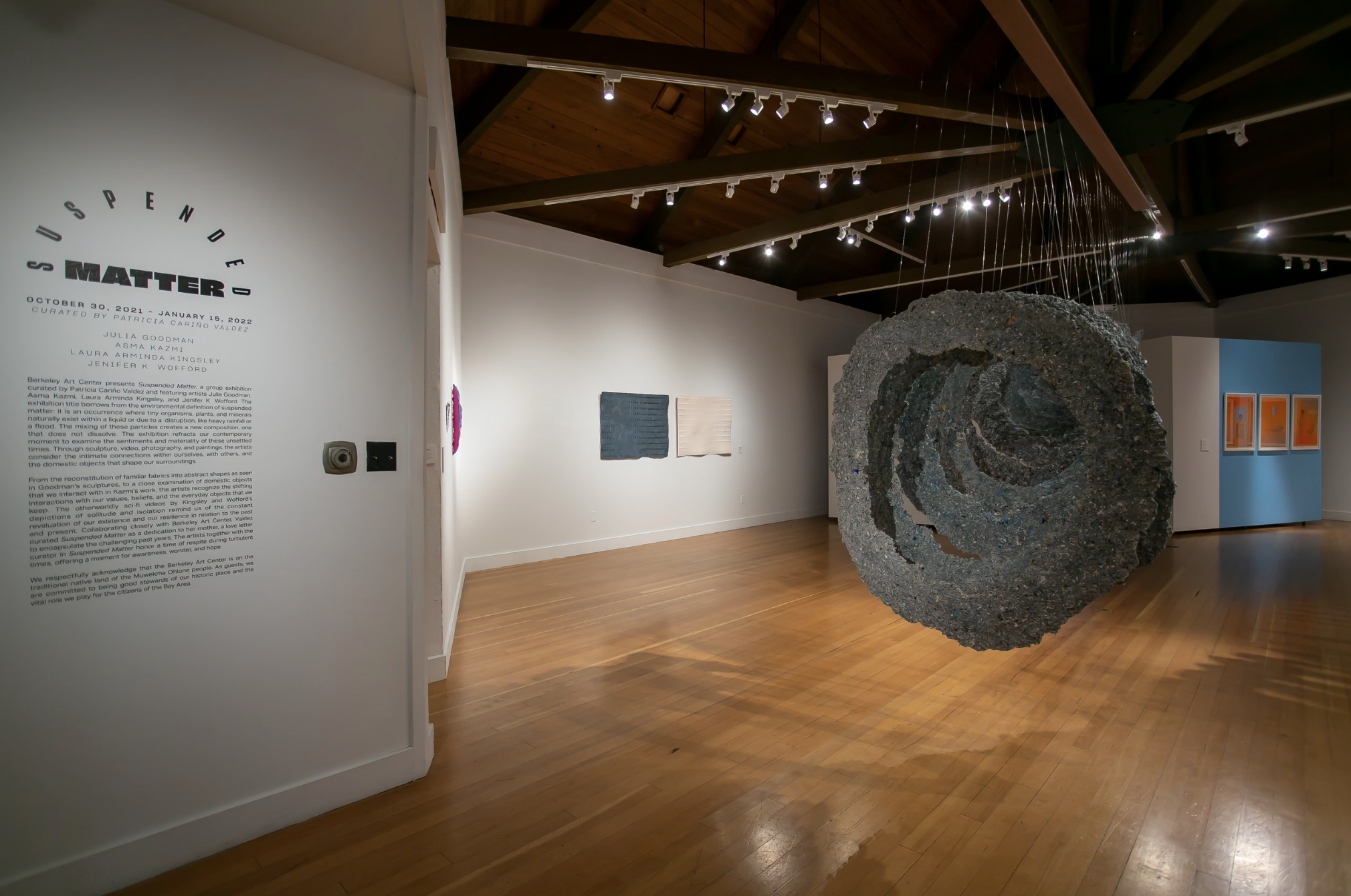
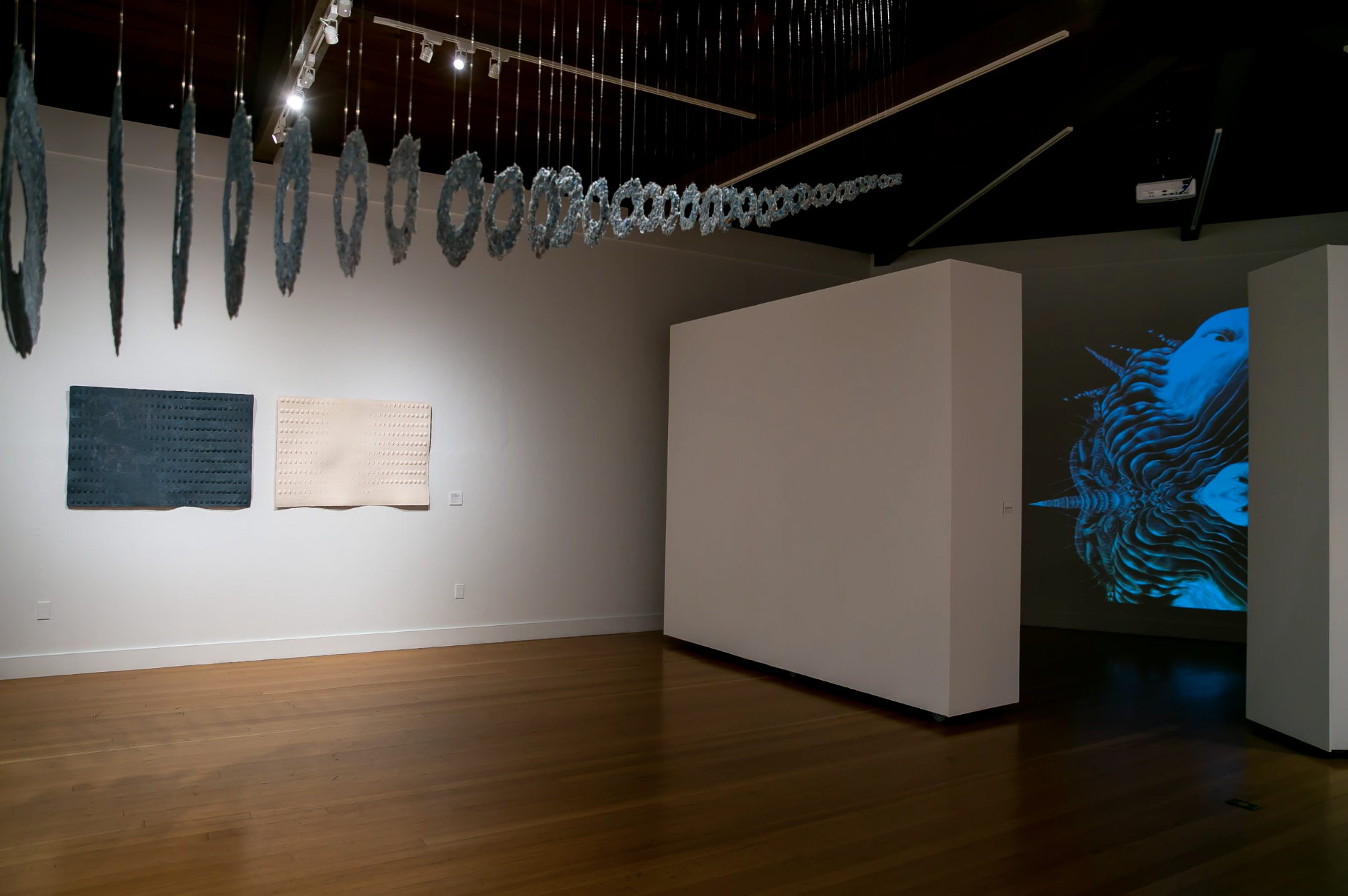
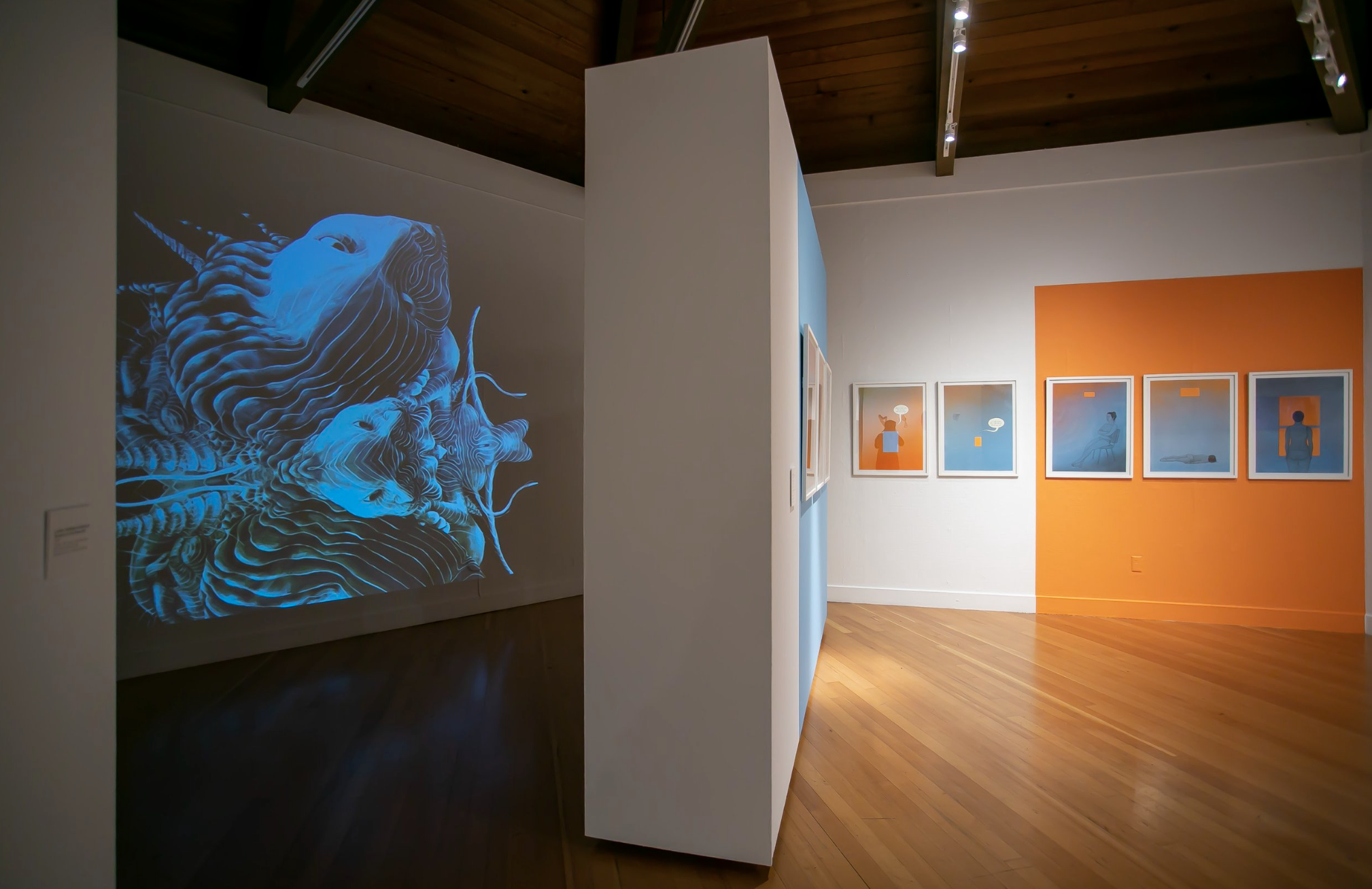
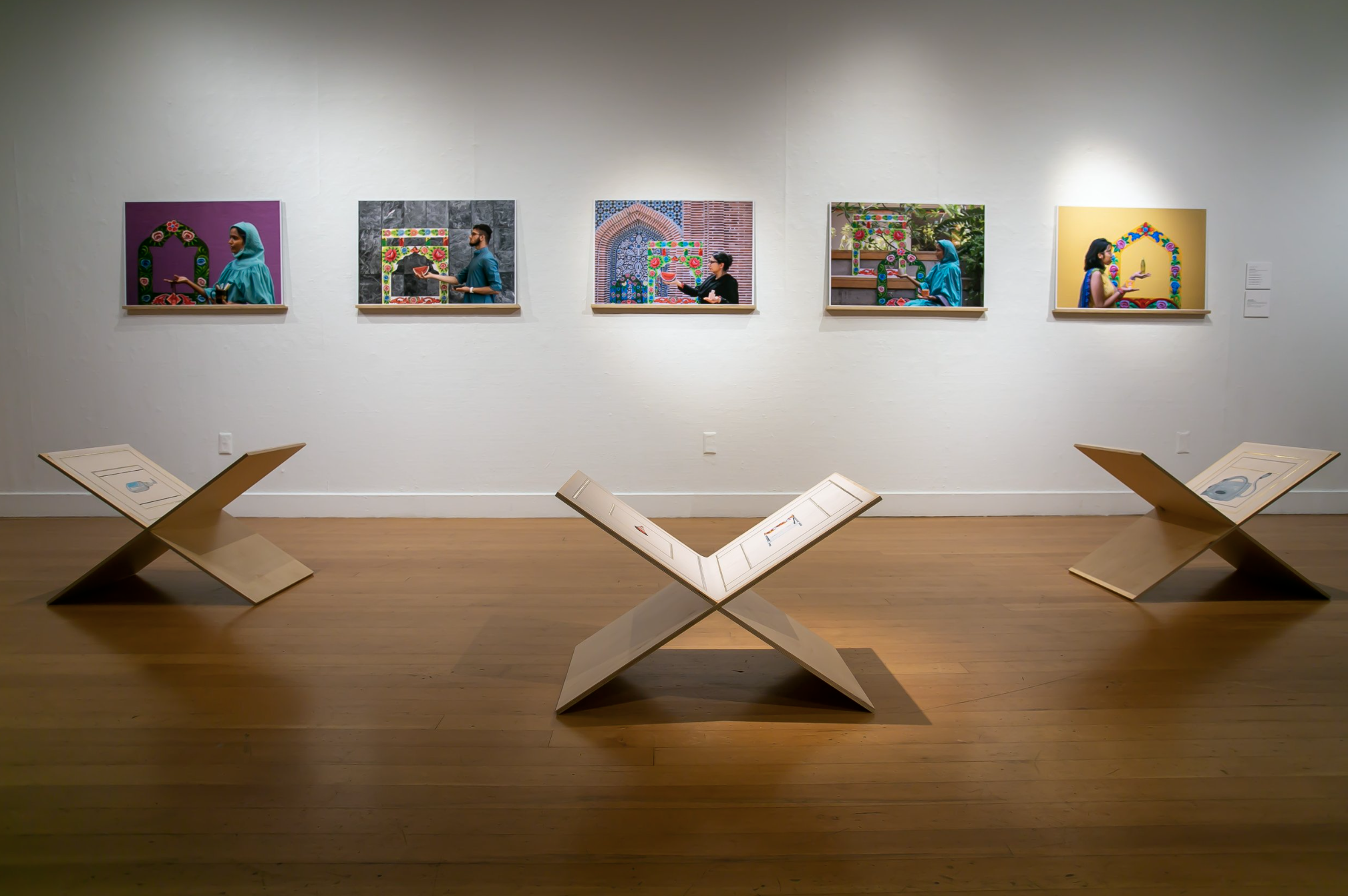
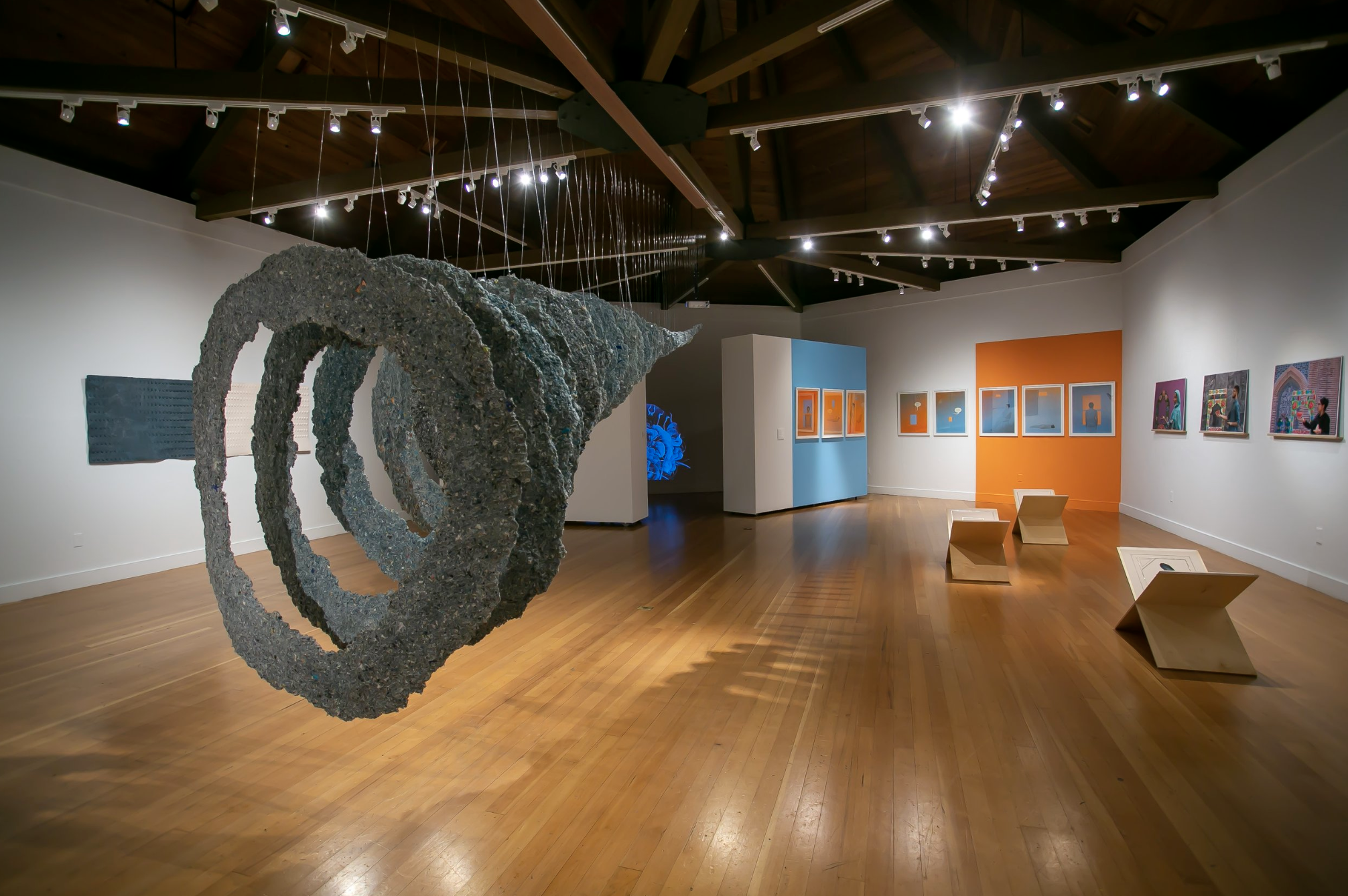
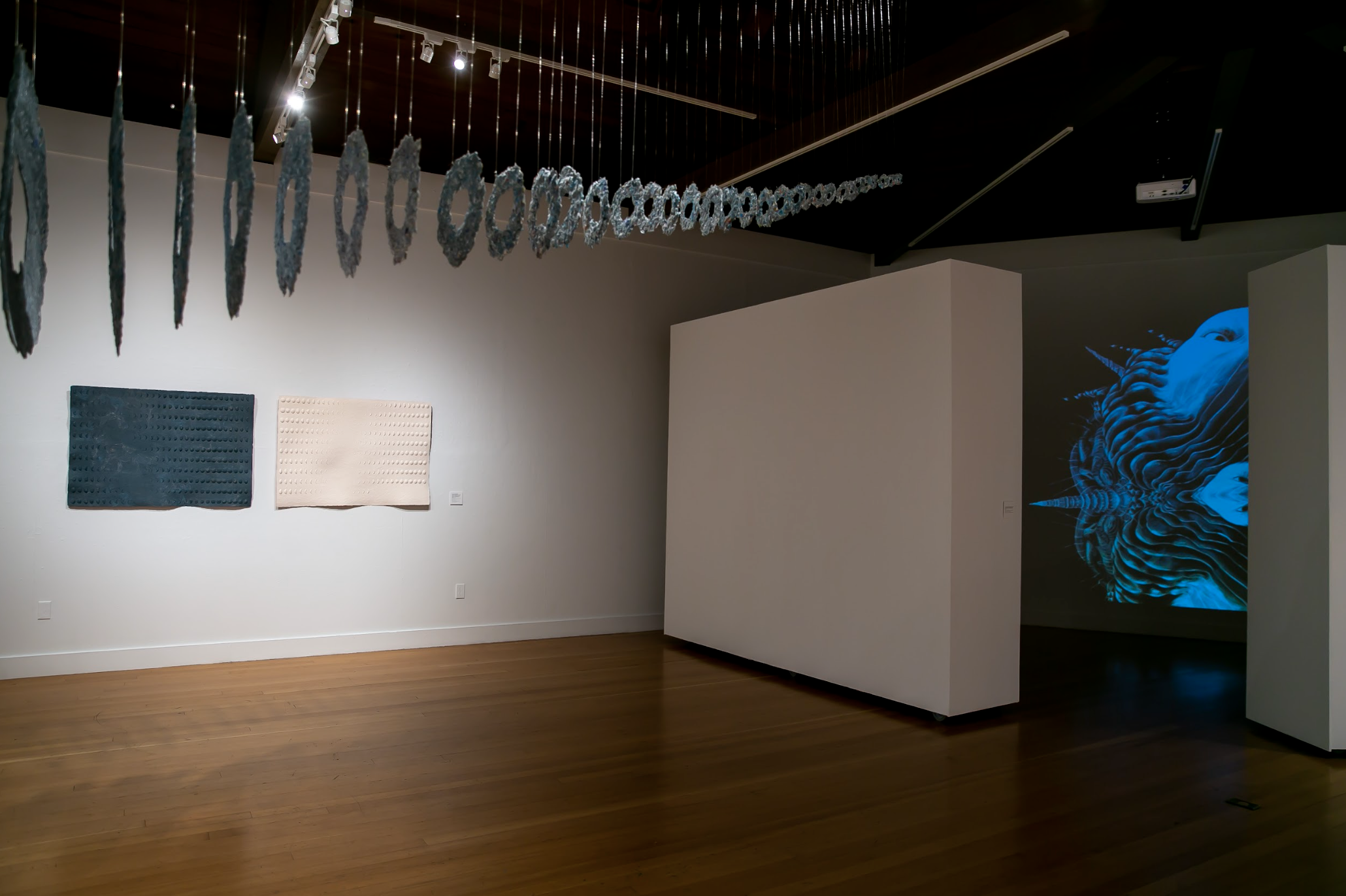
Suspended Matter borrows its title from the environmental definition of an occurrence where tiny organisms, plants, and minerals naturally exist within a liquid, or due to a disruption such as heavy rainfall or a flood. The mixing of these particles creates a new composition, one that does not dissolve. The exhibition refracts our contemporary moment to examine the sentiments and materiality of these unsettled times. Through sculpture, video, photography, and paintings, the artists consider the intimate connections within ourselves, with others, and the domestic objects that shape our surroundings.
From the reconstitution of familiar fabrics into abstract shapes as seen in Goodman’s sculptures, to a close examination of the domestic objects that we interact with in Kazmi’s work, the artists recognize the shifting interactions with our values, beliefs, and the everyday objects that we keep. The otherworldly biological fictions by Kingsley and Wofford’s depictions of solitude and isolation remind us of the constant revaluation of our existence and our resilience in relation to the past and present. Collaborating closely with Berkeley Art Center, Valdez curated Suspended Matter as a dedication to her mother, a love letter to encapsulate the challenging past years. The artists in Suspended Matter together with the curator honor a time of respite during turbulent times, offering a moment for awareness, wonder, and hope.
Installation photos by Minoosh Zomorodinia
JULIA GOODMAN
Julia Goodman, Certain is nothing now. (suspended piece in foreground), 2009
Julia Goodman, Traces (Home), 2020-2021
JULIA GOODMAN explores the potential of handmade paper to create objects that honor personal histories and relationships. Following a laborious process of tearing and pulping discarded bedsheets and t-shirts, the artist hand presses pulp, fibers suspended in water, against flat surfaces, hand-carved wood molds, or exterior surfaces to create sculptural and abstract forms. Created in a moment of personal precariousness in 2009, Certain is nothing now. is on display for the first time in over a decade in a new context of collective uncertainty. The work, which consists of concentric circles of handmade paper, hangs from above, inviting the viewer to look up through the shifting, concrete-like forms. Waning (8/19/07–7/14/08) & Waxing (7/27/18–5/10/19), a deeply personal piece, speaks to the art of life: being a grieving daughter and an expecting mother. Experienced 12 years apart, it draws from a need to seek catharsis through transforming physical materials through her reinterpretation of Jewish mourning rituals. In the ongoing series Traces (Home), Goodman presses pulped and torn fabrics against hard exterior surfaces around her home, such as brick walls and concrete floors. Leaving the pressed pulp outside to dry, it forms imperfect textures and lifts detritus like dirt and flecks of brick. This work considers what we reveal and conceal, and tests the malleability and strength of rag paper to listen, absorb, and hold. Commenting on intimacy, domestic space, and shifting time, Goodman’s work transforms soft materials to contrast complex individual and collective experiences.
ASMA KAZMI
Asma Kazmi, (top row from left to right): After Jahangir, Luluwa, 2021, After Jahangir, Shabbir, 2021, After Jahangir, Asma, 2021, After Jahangir, Luluwa 2, 2021, After Jahangir, Simran, 2021; (bottom row) After Jahangir, 2021
Asma Kazmi, After Jahangir (detail), 2021
ASMA KAZMI presents After Jahangir, a series inspired by the history of Mughal emporer Jahangir (1569–1627). Also known as “World Seizer” for his preoccupation with collecting plants, animals, minerals, and rarities from different parts of the globe, Jahangir is often depicted in royal portraits with his arm lifted to his face holding up a distinguished object to meditate on its properties. In her new photographs, with the help of students at Habib University, Karachi, Kazmi staged a reperformance of Jahangir’s gesture. Replacing articulations of Jahangir’s refined connoisseurship with overproduced contemporary consumer objects, the photographs and drawings in the work After Jahangir serve as documents about collecting, accumulating, and trashing of “stuff.”
Jahangir’s portraits represent an ancient, non-Western, and Islamic form of ecological, spatial, and material awareness. By creating a series of images depicting entanglements of historical representations, Kazmi is interested in imagining new and unique possibilities of thinking about matter, materiality, and the ecology.
LAURA ARMINDA KINGSLEY
Laura Arminda Kingsley, still from Murmurs of the Deep VIII, 2021
Laura Arminda Kingsley, still from Murmurs of the Deep II, 2020
LAURA ARMINDA KINGSLEY combines drawing, painting, and sculpture to create works inspired by science, folklore, and her Caribbean heritage. In her new videos Murmurs of the Deep VIII and Murmurs of the Deep II, she depicts living things through the lens of deep time, a vast time scale that goes well beyond human lives to the origin of life itself. She depicts microscopic and macroscopic moments through different life such as humans, exoskeletons, and sea creatures to create biological fictions informed by mythologies. Kingsley manifests a seductive scene that unfolds, palpitates, and generates movement from a bottomless space. As the video progresses, the shapes mutate, fuse, and split off into a void. The work becomes an exercise in gaining perspective of a fraction in time, situating ourselves both in the immediate and its impermanence. Kingsley asks us to consider our role in the larger story of the planet.
JENIFER K WOFFORD
Jenifer K Wofford, Fire Season (installation view of series), 2021
JENIFER K WOFFORD’s new series of drawings ground the viewer in our contemporary challenges of the past year. In Fire Season, Wofford interrogates the infamous and ominous “Orange Day” — September 9, 2020 — when wildfire smoke choked the Bay Area, turning the skies into a doomsday scenario. This specific date, compounded with being in the midst of the pandemic, and other tragic national and personal events from the past year and a half spurred on her new body of work. Working between the complementary colors of orange and blue, each shade representing both tension and relief in contrast to one another, Wofford inserts solitary figures and boxed forms to embody her experience of climate crisis, public health crisis, and personal crisis. Her stylized drawings outline figures and shapes that anchor and frame an atmosphere of struggle and constraint. This oscillation of color exemplifies the pendulum swing of the last year and its intersecting instances of anger, anxiety, and absurdity.







